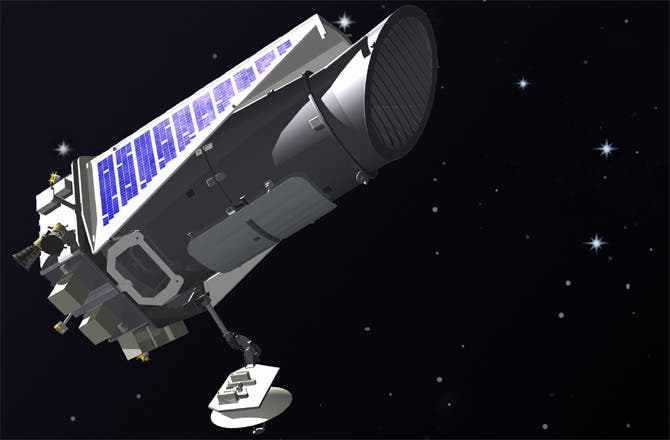We owe a lot to NASA’s Kepler space telescope: since it launched in 2009, the space telescope has helped astronomers identified at least 2,342 exoplanets, with thousands more still to be confirmed. A few dozens of these planets are less than twice Earth’s size and orbit their parent star just close enough to potentially be habitable. Unfortunately, the planet-hunting telescope will run out of fuel within a couple of months, becoming stranded 93 million miles from home.
With nary a gas station to be found in deep space, the spacecraft is going to run out of fuel,” Charlie Sobeck, system engineer for the Kepler space telescope mission, wrote in a news release for NASA. “We expect to reach that moment within several months.”
Kepler was initially slated for a 3.5-year-long mission but heroically marched on for many years after its warranty expired. The telescope is designed to look for planets in one small patch of sky that contains about 4.5 million stars. To identify potentially new worlds outside our solar system, Kepler detects the dimming that occurs when a planet transits a star. Imagine a moth flying in front of a spotlight — it will cause a subtle change in brightness, and the bigger the moth, the more light it blocks. Likewise, patterns of changes in the brightness of each star indicate orbiting planets. By June 2010, just 15 months after its launch, Kepler had already found over 700 potential planets.
In 2013, a malfunction almost ended the entire mission. NASA, however, was able to salvage some segments of the spacecraft’s operational capabilities and devised a new technique to observe distant worlds. Thus, the Kepler mission was reborn as “K2”, which discovered an additional 307 confirmed exoplanets and another 479 candidates.
Originally, the space telescope was set to launch with a partially filled fuel tank that would enable its thrusters to fire for a maximum of six years. But before it launched, engineers noticed that Kepler was actually below its allowed weight threshold, and filled its tank. Now, nine years after it launched, the spacecraft’s tank is nearly dry. In the meantime, scientists will surely have time to discover a couple more candidates. Who knows — maybe these will be the most promising yet.
Once the fuel runs out, NASA will cut the comm-link and Kepler will officially become another heap of space junk — but at least it will be so far from Earth it won’t cause any problems (unlike the gazillion pieces of space junk currently in Earth’s low orbit). On April 16, Kepler’s replacement, the Transiting Exoplanet Survey Satellite, is scheduled to launch from Cape Canaveral, Florida. A new age of exoplanet exploration is upon us, and it couldn’t be more exciting.










